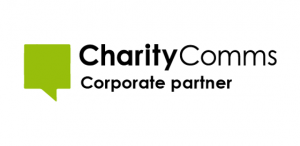The media is more important than ever for charities looking to communicate their work and effectiveness. But the definition of “media” in an ever-changing and evolving digital world means that a media strategy needs to cover more than just journalists. Media strategy needs to stretch to influencers, blogs and online communities.
For charities where time, money and resources are tight, it’s important you understand what parts of the media will be most effective in helping your charity achieve its objectives. Being strategic is vital, so that your messages get seen by the right people at the right time and in the right places.
Working through the steps below will help you and your organisation decide what you want to focus on for your media strategy, how this will reach you goals and enable precious resources to be focused exactly where they are needed.
In this article:
Set clear, measurable media objectives
It’s tempting to put a lot of objectives into your media strategy, but it is always helpful to set “less but better” objectives.
This could mean anything from qualitative KPIs to seeing if the target audience ‘adopts’ the key messages or uses it to change policy.
“Raising awareness” is not a valid objective as it is not specifically measurable or time-limited. Try and make your goals SMART where possible
The following example objectives are better for your media strategy:
- Achieve five pieces of coverage in Tier 1 media in one year
- Drive 500 downloads of our annual report within the first month of launch
- Gain 3,000 views of our explainer video within three months
If it helps, set one single “North Star” goal, which is the guiding light that all other objectives fall under. Try to make it specific and time-limited. For example, this could be “Recruit 1,000 new supporters by the end of the year”, or “Drive 10% extra income from digital channels by the end of the year”.
Whatever objectives you set, make sure they relate to your organisation’s objectives, so it’s clear how your media activity contributes to the overall success of your organisation.
Research your target audience
If you want an effective media strategy, you need to understand who your target audience is and the media they consume. The more customer insights you have, the better you’re equipped to deliver meaningful messages to people.
What is your audience demographic and what are their interests? Google Analytics’ Audiences report can help with this by showing you who is visiting your website.
What brands and media do they engage with? Take a look at Facebook Audience Insights, a tool designed to help you learn more about your target audiences, including aggregate information about geography, demographics, purchase behavior and more.
Both of the above are free tools, but for even more insight talk to your target audience. Ask your staff, volunteers and other supporters what media they read and where they go for support and advice – both online and offline – to get a better idea of their media consumption habits.
Craft your key messages
Your key messages should help explain your organisation and what it does, why this is important and the difference you make. But more than this – you want to identify what you want people to think, feel or do for your charity.
If you can communicate what you want to say about your charity, but also what you want people to do to support your charity, then that is a much more active message to place in the media and will inspire people to take action.
Key messages should also be split by their target audience. So what will appeal to an older woman in the South East of England will be different to a millennial in Manchester.
Tailor your key messages to the audiences you are trying to reach.
Create content that fits its platform
Now you know what you’re trying to achieve, who you’re trying to reach and the messages you’re trying to reach them with, you’re ready to create the content that they’ll consume in the media.
A modern media strategy needs to think beyond the press release. Can you create other compelling content that achieves the same aim?
This could be a simple 60 second video that explains a difficult concept in a clear and simple way, like these Kurzgesagt explainer videos.
It could be an infographic, that identifies the key stats from a particular area of research or visualises a particular problem and your solution to it, like this tweet from Mind.
It could be a hashtag-led campaign that is activated across Twitter and Instagram that contains a series of highly impactful visuals, like Extinction Rebellion’s #PaintTheStreets campaign on Instagram.
Of course, you could go down the traditional route of case studies, research data and media statements, but make sure you research what media works best for your strategy and the content that works best for that particular media.
Define your distribution channels
You could create the most compelling content ever, but unless you have a clear plan for distributing that content then not many people are going to see it.
Traditional media are one way to get your message out, but the possibilities open up when you consider using social media to distribute your content as well.
But think beyond that: Can you use Facebook ads to spread awareness of your messages?
Are there any email newsletters from partners and like-minded organisations that are well read and would include your content?
Do you have any staff or high-profile supporters with large online presences that can help distribute your content?
Even if it’s just creating a few social media messages and including them in a social media pack that your staff and supporters can share on your behalf, think about how you are making your content easy to distribute.
Monitor, measure and evaluate
Measurement is key to understanding the effectiveness of your media strategy, and it’s important to set exactly what you’re going to measure and how from the outset.
What you’re going to measure depends on your objectives, but make sure to define how you will measure each objective – including the tools you’ll use, who is responsible for measuring and how often you’re going to report on progress.
Knowing what worked and what didn’t will help you understand which areas of your strategy to change and which to do more of. After all, a media strategy should be evolving and never set in stone.
Measuring your media activity will also provide you with valuable insight to build the case for future investment.
Setting clear tangible objectives that feed in to your overall organisational objectives and showing how your media activity has helped meet those goals is vital to the success of any media strategy.
The steps listed above will help you on your way, but only by testing what works and adjusting your strategy based on results will you see a truly successful media strategy.
Need help with your media strategy – we’d love to help.




